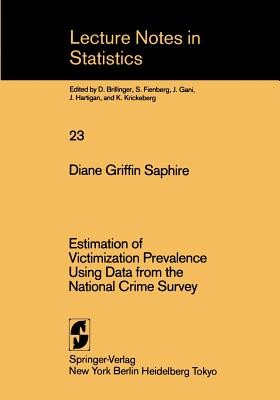
- Išsiųsime per 10–14 d.d.
- Autorius: D G Saphire
- Leidėjas: Springer
- ISBN-10: 0387960201
- ISBN-13: 9780387960203
- Formatas: 17.8 x 25.4 x 1 cm, minkšti viršeliai
- Kalba: Anglų
- Extra -20 % nuolaida šiai knygai su kodu ENG20
Estimation of Victimization Prevalence Using Data from the National Crime Survey + nemokamas atvežimas! | knygos.lt
Atsiliepimai
Aprašymas
The National Crime Survey is a sample survey of housing units conducted by the U.S. Bureau of the Census. All eligible occupants of a sampled unit are interviewed every six months (for up to seven interviews) about victimizations that they have experienced during the previous six months. In this monograph several longitudinal analyses are performed using a subsample of the data covering the years 1973 through 1975. In particular. several methods of estimating the proportion of units that are crime-free for a given year. denoted by 8. are discussed. First. several ad hoc. as opposed to model-based. estimators of 8 are discussed. including those used by the Bureau of Justice Statistics. We find models under which these estimators are consistent for 8. One such model fits the data very well. A superpopulation approach to the estimation of 8 is then taken. assuming that the nonresponse and sampling mechanisms are ignorable. Three models are fit to the data: i) a homogeneous Bernoulli model. under which victimization is independent from month to month ii) a correlated Bernoulli model. under which victimization in any two months has positive correlation p. and iii) a two-state Markov model with states victimized and crime-free. The correlated Bernoulli model is found to be very inadequate. The other two models fit the 1975 data well. but have rather poor fits to the 1973 and 1974 data. Rotation group biases are conjectured to be the cause of these poor fits.EXTRA 20 % nuolaida
Kupono kodas: ENG20
Akcija baigiasi už 06:37:54
Nuolaidos kodas galioja perkant nuo 10 €. Nuolaidos nesumuojamos.

- Autorius: D G Saphire
- Leidėjas: Springer
- ISBN-10: 0387960201
- ISBN-13: 9780387960203
- Formatas: 17.8 x 25.4 x 1 cm, minkšti viršeliai
- Kalba: Anglų




Atsiliepimai